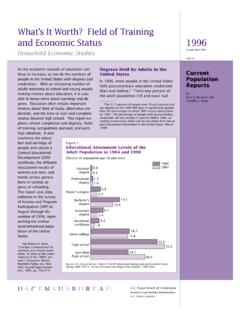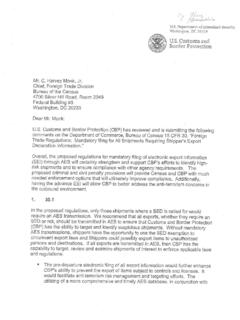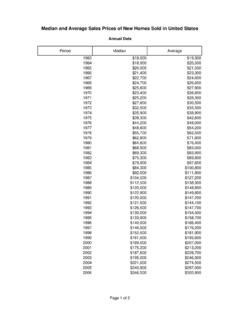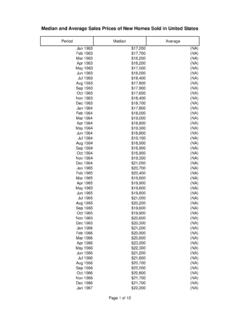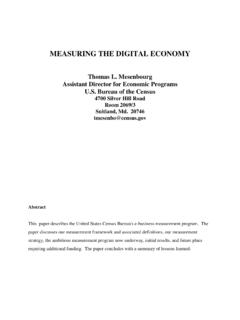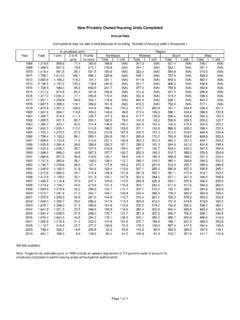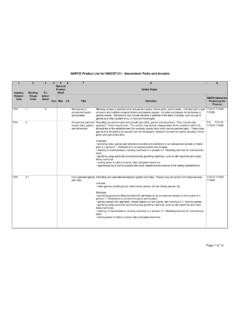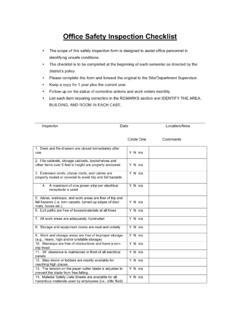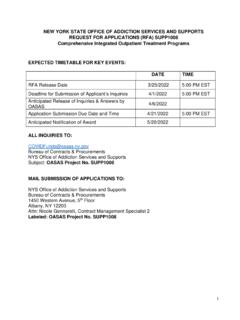Transcription of NORTH AMERICAN INDUSTRY CLASSIFICATION SYSTEM
1 NORTH AMERICAN INDUSTRY CLASSIFICATION SYSTEM United States, 2022 EXECUTIVE office OF THE PRESIDENT office OF MANAGEMENT AND BUDGET 1 Foreword The Instituto Nacional de Estad stica y Geograf a (INEGI) of Mexico, Statistics Canada, and the United States office of Management and Budget, through its Economic CLASSIFICATION policy Committee, have jointly updated the SYSTEM of CLASSIFICATION of economic activities that makes the industrial statistics produced in the three countries comparable.
2 The NORTH AMERICAN INDUSTRY CLASSIFICATION SYSTEM (NAICS) revision for 2022 is scheduled to go into effect for reference year 2022 in Canada and the United States, and 2023 in Mexico. NAICS was originally developed to provide a consistent framework for the collection, analysis, and dissemination of industrial statistics used by government policy analysts, by academics and researchers, by the business community, and by the public. Revisions for 2022 were made to account for our rapidly changing economies.
3 Classifications serve as a lens through which to view the data they classify. NAICS was developed in accordance with a single principle of aggregation, the principle that producing units that use similar production processes should be grouped together. Though NAICS differs from other INDUSTRY CLASSIFICATION systems, the three countries continue to strive to create industries that do not cross two-digit Division boundaries of the United Nations' International Standard Industrial CLASSIFICATION of All Economic Activities (ISIC).
4 The actual CLASSIFICATION reveals only the tip of the work carried out by dedicated staff from INEGI, Statistics Canada, and statistical agencies. It is through their efforts, painstaking analysis, and spirit of accommodation that NAICS serves as a harmonized international CLASSIFICATION of economic activities in NORTH America. 3 Preface The NORTH AMERICAN INDUSTRY CLASSIFICATION SYSTEM (NAICS) represents a continuing cooperative effort among Statistics Canada, Mexico's Instituto Nacional de Estad stica y Geograf a (INEGI), and the Economic CLASSIFICATION policy Committee (ECPC) of the United States, acting on behalf of the office of Management and Budget, to create and maintain a common INDUSTRY CLASSIFICATION SYSTEM .
5 With its inception in 1997, NAICS replaced the Standard Industrial CLASSIFICATION (1980) of Canada, the Mexican CLASSIFICATION of Activities and Products (1994), and the Standard Industrial CLASSIFICATION (1987) of the United States. Since 1997, the countries have collaborated in producing five-year revisions to NAICS in order to keep the CLASSIFICATION SYSTEM current with changes in economic activities. NAICS is unique among INDUSTRY classifications in that it is constructed within a single conceptual framework.
6 Economic units that have similar production processes are classified in the same INDUSTRY , and the lines drawn between industries demarcate, to the extent practicable, differences in production processes. This supply-based, or production-oriented, economic concept was adopted for NAICS because an INDUSTRY CLASSIFICATION SYSTEM is a framework for collecting and publishing information on both inputs and outputs, for statistical uses that require that inputs and outputs be used together and be classified consistently.
7 Examples of such uses include measuring productivity, unit labor costs, and the capital intensity of production, estimating employment-output relationships, constructing input-output tables, and other uses that imply the analysis of production relationships in the economy. The CLASSIFICATION concept for NAICS leads to production of data that facilitate such analyses. In the design of NAICS, attention was given to developing production-oriented classifications for (a) new and emerging industries, (b) service industries in general, and (c) industries engaged in the production of advanced technologies.
8 These special emphases are embodied in the particular features of NAICS, discussed below. These same areas of special emphasis account for many of the differences between the structure of NAICS and the structures of INDUSTRY CLASSIFICATION systems in use elsewhere. NAICS provides INDUSTRY comparability among the three NORTH AMERICAN countries and maintains compatibility with the two-digit level of the United Nation's International Standard Industrial CLASSIFICATION of all Economic Activities (ISIC, Rev.)
9 4). NAICS divides the economy into 20 sectors. Industries within these sectors are grouped according to the production criterion. The NAICS Information sector brings together activities that transform information into commodities that are produced and distributed, and activities that provide the means for distributing those products, other than through traditional wholesale-retail distribution channels. Industries included in this sector are grouped into six subsectors: motion picture and sound recording industries; publishing industries; broadcasting and content providers; telecommunications; computing infrastructure providers, data processing, web hosting, and related services; and web search portals, libraries, archives, and other information services.
10 A sector for Professional, Scientific, and Technical Services comprises establishments engaged in activities where human capital is the major input. The industries within this sector are each defined by the expertise and training of the service provider. The sector includes such industries as offices of lawyers, engineering services, architectural services, advertising agencies, and interior design services. A sector for Arts, Entertainment, and Recreation includes a wide range of establishments that operate facilities or provide services to meet varied cultural, entertainment, and recreational interests of their patrons.
